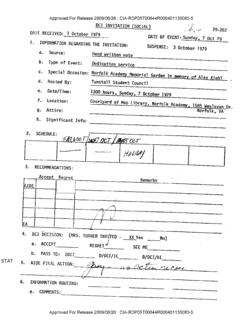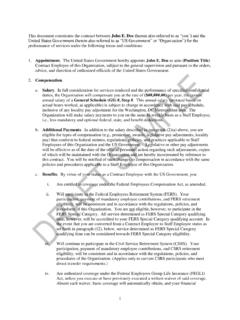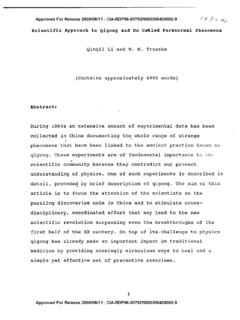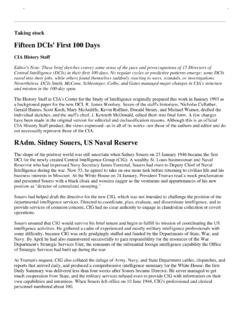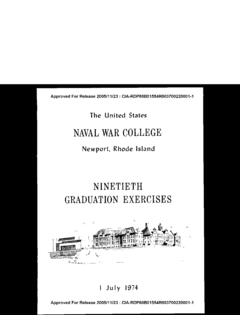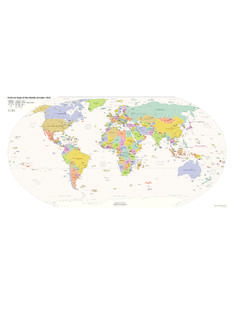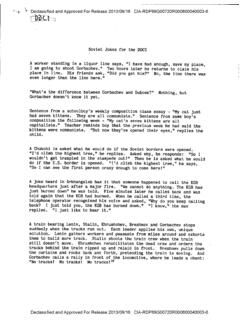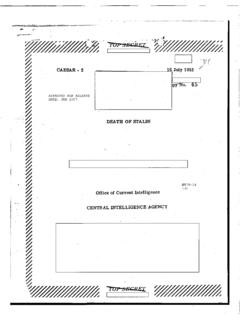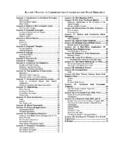Transcription of American Primacy and Its Geostrategic Imperatives
1 ZBIGNIEW BRZEZINSKI. THE GRAND CHESSBOARD. American Primacy and Its Geostrategic Imperatives A Member of the Perseus Books Group -iii- Copyright 1997 by Zbigniew Brzezinski. Published by Basic Books, A Member of the Perseus Books Group. All rights reserved. Printed in the United States of America. No part of this book may be used or reproduced in any manner whatsoever without written permission except in the case of brief quotations embodied in critical articles and reviews. For information address Basic Books, 10 East 53rd Street, New York, NY 10022. Designed by Elliott Beard. Maps by Kenneth Velasquez. Library of Congress Cataloging-in-Publication Data Brzezinski, Zbigniew K., 1928 The grand chessboard: American Primacy and its Geostrategic Imperatives / Zbigniew ed. p. cm. Includes index. ISBN 0465-02725-3 (cloth) ISBN 0465-02726-1 (paper) 1. United States -- Foreign relations -- 1989- 2. Geopolitics -- United States -- History -- 20th Century.
2 3. Geopolitics -- History -- 20th century. 4. World politics -- 19895. Eurasia -- Strategic aspects. 1. Title. 1997 97- 13812 -- dc20 CIP. 00 01 /RRD 10 9 8 7 6 5. -iv- For my students -- to help them shape tomorrow's world -v- CONTENTS. List of Maps ix List of Charts and Tables xi Introduction: Superpower Politics xiii 1 Hegemony of a New Type 3. The Short Road to Global Supremacy 3. The First Global Power 10. The American Global System 24. 2 The Eurasian Chessboard 30. Geopolitics and Geostrategy 37. Geostrategic Players and Geopolitical Pivots 40. Critical Choices and Potential Challenges 48. 3 The Democratic Bridgehead 57. Grandeur and Redemption 61. America's Central Objective 71. Europe's Historic Timetable 81. -vii- 4 The Black Hole 87. Russia's New Geopolitical Setting 87. Geostrategic Phantasmagoria 96. The Dilemma of the One Alternative 118. 5 The Eurasian Balkans 123. The Ethnic Cauldron 125. The Multiple Contest 135. Neither Dominion Nor Exclusion 148.
3 6 The Far Eastern Anchor 151. China: Not Global but Regional 158. Japan: Not Regional but International 173. America's Geostrategic Adjustment 185. 7 Conclusion 194. A Geostrategy for Eurasia 197. A Trans-Eurasian Security System 208. Beyond the Last Global Superpower 209. Index 217. -viii- MAPS. The Sino-Soviet Bloc and Three Central Strategic Fronts 7. The Roman Empire at Its Height 11. The Manchu Empire at Its Height 14. Approximate Scope of Mongol Imperial Control, 1280 16. European Global Supremacy, 1900 18. British Paramountcy, 1860-1914 20. American Global Supremacy 22. The World's Geopolitically Central Continent and Its Vital Peripheries 32. The Eurasian Chessboard 34. The Global Zone of Percolating Violence 53. France's and Germany's Geopolitical Orbits of Special Interest 64. Is This Really "Europe"? 82. Beyond 2010: The Critical Core of Europe's Security 85. -ix- Loss of Ideological Control and Imperial Retrenchment 94. Russian Military Bases in the Former Soviet Space 108.
4 The Eurasian Balkans 124. Major Ethnic Groups in Central Asia 126. The Turkic Ethnolinguistic Zone 137. The Competitive Interests of Russia, Turkey, and Iran 138. Caspian-Mediterranean Oil Export Pipelines 146. Boundary and Territorial Disputes in East Asia 155. Potential Scope of China's Sphere of Influence and Collision Points 167. Overlap Between a Greater China and an American -Japanese Anti-China Coalition 184. -x- LIST OF CHARTS AND TABLES. The Continents: Area 33. The Continents: Population 33. The Continents: GNP 33. European Organizations 58. ELI Membership: Application to Accession 83. Demographic Data for the Eurasian Balkans 127. Asian Armed Forces 156. -xi- INTRODUCTION. Superpower Politics E VER SINCE THE CONTINENTS started interacting politically, some five hundred years ago, Eurasia has been the center of world power. In different ways, at different times, the peoples inhabiting Eurasia -- though mostly those from its Western European periphery -- penetrated and dominated the world's other regions as individual Eurasian states attained the special status and enjoyed the privileges of being the world's premier powers.
5 The last decade of the twentieth century has witnessed a tectonic shift in world affairs. For the first time ever, a non-Eurasian power has emerged not only as the key arbiter of Eurasian power relations but also as the world's paramount power. The defeat and collapse of the Soviet Union was the final step in the rapid ascendance of a Western Hemisphere power, the United States, as the sole and, indeed, the first truly global power. Eurasia, however, retains its geopolitical importance. Not only is its western periphery -- Europe -- still the location of much of the world's political and economic power, but its eastern region -Asia -- has lately become a vital center of economic growth and rising political influence. Hence, the issue of how a globally engaged -xiii- America copes with the complex Eurasian power relationships -and particularly whether it prevents the emergence of a dominant and antagonistic Eurasian power -- remains central to America's capacity to exercise global Primacy .
6 It follows that -- in addition to cultivating the various novel dimensions of power (technology, communications, information, as well as trade and finance) -- American foreign policy must remain concerned with the geopolitical dimension and must employ its influence in Eurasia in a manner that creates a stable continental equilibrium, with the United States as the political arbiter. Eurasia is thus the chessboard on which the struggle for global Primacy continues to be played, and that struggle involves geostrategy -- the strategic management of geopolitical interests. It is noteworthy that as recently as 1940 two aspirants to global power, Adolf Hitler and Joseph Stalin, agreed explicitly (in the secret negotiations of November of that year) that America should be excluded from Eurasia. Each realized that the injection of American power into Eurasia would preclude his ambitions regarding global domination. Each shared the assumption that Eurasia is the center of the world and that he who controls Eurasia controls the world.
7 A half century later, the issue has been redefined: will America's Primacy in Eurasia endure, and to what ends might it be applied? The ultimate objective of American policy should be benign and visionary: to shape a truly cooperative global community, in keeping with long-range trends and with the fundamental interests of humankind. But in the meantime, it is imperative that no Eurasian challenger emerges, capable of dominating Eurasia and thus also of challenging America. The formulation of a comprehensive and integrated Eurasian geostrategy is therefore the purpose of this book. Zbigniew Brzezinski Washington, D. C. April 1997. -xiv- CHAPTER 1. Hegemony of a New Type HEGEMONY IS AS OLD AS MANKIND. But America's current global supremacy is distinctive in the rapidity of its emergence, in its global scope, and in the manner of its exercise. In the course of a single century, America has transformed itself -- and has also been transformed by international dynamics -- from a country relatively isolated in the Western Hemisphere into a power of unprecedented worldwide reach and grasp.
8 THE SHORT ROAD TO GLOBAL SUPREMACY. The Spanish- American War in 1898 was America's first overseas war of conquest. It thrust American power far into the Pacific, beyond Hawaii to the Philippines. By the turn of the century, American strategists were already busy developing doctrines for a two-ocean naval supremacy, and the American navy had begun to challenge the notion that Britain "rules the waves." American claims of a special status as the sole guardian of the Western Hemisphere's security -- proclaimed earlier in the century by the Monroe Doctrine -3- and subsequently justified by America's alleged "manifest destiny" -- were even further enhanced by the construction of the Panama Canal, which facilitated naval domination over both the Atlantic and Pacific Oceans. The basis for America's expanding geopolitical ambitions was provided by the rapid industrialization of the country's economy. By the outbreak of World War I, America's growing economic might already accounted for about 33 percent of global GNP, which displaced Great Britain as the world's leading industrial power.
9 This remarkable economic dynamism was fostered by a culture that favored experimentation and innovation. America's political institutions and free market economy created unprecedented opportunities for ambitious and iconoclastic inventors, who were not inhibited from pursuing their personal dreams by archaic privileges or rigid social hierarchies. In brief, national culture was uniquely congenial to economic growth, and by attracting and quickly assimilating the most talented individuals from abroad, the culture also facilitated the expansion of national power. World War I provided the first occasion for the massive projection of American military force into Europe. A heretofore relatively isolated power promptly transported several hundred thousand of its troops across the Atlantic -- a transoceanic military expedition unprecedented in its size and scope, which signaled the emergence of a new major player in the international arena. Just as important, the war also prompted the first major American diplomatic effort to apply American principles in seeking a solution to Europe's international problems.
10 Woodrow Wilson's famous Fourteen Points represented the injection into European geopolitics of American idealism, reinforced by American might. (A decade and a half earlier, the United States had played a leading role in settling a Far Eastern conflict between Russia and Japan, thereby also asserting its growing international stature.) The fusion of American idealism and American power thus made itself fully felt on the world scene. Strictly speaking, however, World War I was still predominantly a European war, not a global one. But its self-destructive character marked the beginning of the end of Europe's political, economic, and cultural preponderance over the rest of the world. In the course of the war, no single European power was able to prevail -4- decisively -- and the war's outcome was heavily influenced by the entrance into the conflict of the rising non-European power, America. Thereafter, Europe would become increasingly the object, rather than the subject, of global power politics.
